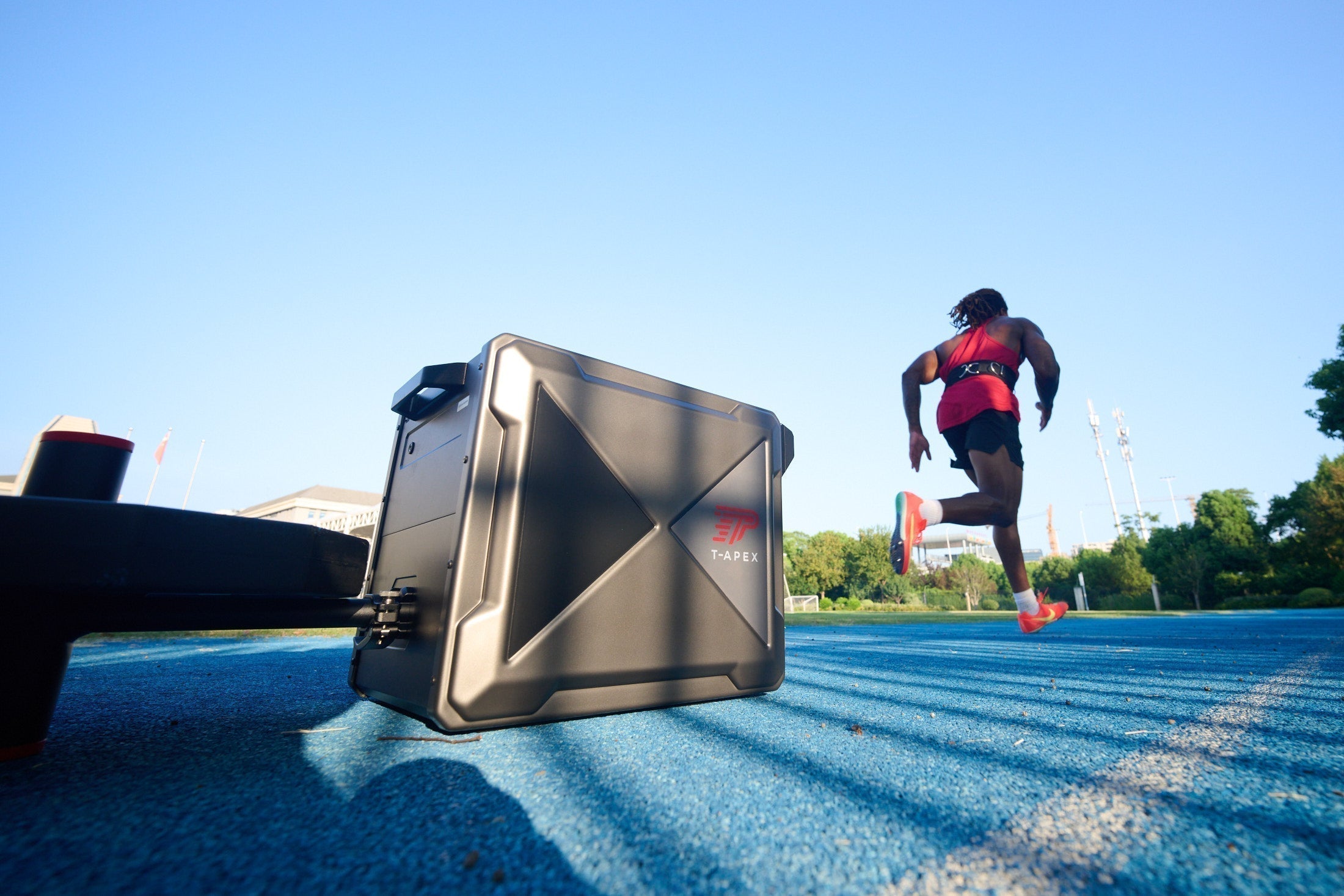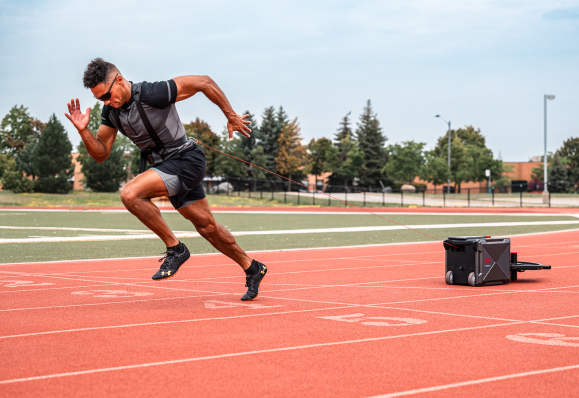Ever wonder what your muscles are really doing when you sprint, clear a hurdle, or land from a jump? Do you know which matters more for your performance—or have you ever thought about how your muscles actually work in those moments?
Both concentric and eccentric actions play a part, but the real challenge is figuring out how to balance them in training.
Concentric Training: Driving the Action
Concentric simply means the muscle is getting shorter while it produces force. Think of standing up from a squat, the first steps out of the blocks, or pressing a barbell up.
Why it matters:
- Concentric strength is tied closely to acceleration. One study found that stronger concentric output in the quads and hips predicted faster 0–10 m sprint times (Comfort et al., 2014). If you want to get out fast, concentric power is essential.
- It’s also central to jumping ability. Athletes with higher concentric power almost always jump higher, because they can generate that upward drive quickly (McBride et al., 2002).
Where it falls short:
- Muscles just can’t generate as much force concentrically. Peak output is often 30–40% lower than what they can do eccentrically (Hortobágyi & Katch, 1990).
- It doesn’t prepare athletes as well for the braking and landing forces they’ll face in real competition.
Eccentric Training: Controlling the Load
Eccentric, on the other hand, is when the muscle lengthens under load. That’s what happens as you lower into a squat, control your stride at top speed, or absorb the landing from a jump.
Why it makes a difference:
- Eccentric work allows muscles to handle 20–60% more force than concentric training (Douglas et al., 2017). That’s free strength potential if you know how to tap into it.
- It also stiffens muscle–tendon units, which improves running economy and sprint mechanics (LaStayo et al., 2014). In other words, you waste less energy at top speed.
- A six-week study showed that athletes doing eccentric-heavy programs improved their vertical jump by 7–10%, while concentric-only groups managed just 3–5% (Franchi et al., 2015).
Injury prevention bonus:
Hamstring strains are every sprinter’s nightmare. Eccentric hamstring work—like Nordic curls—has been shown to reduce those injuries by more than 50% in elite players (Petersen et al., 2011). That’s hard to ignore.
Concentric vs. Eccentric: Which Works Best?
The truth: neither. Concentric and eccentric training are like offense and defense. You can’t win games—or medals—without both.
- Need to accelerate hard and fast? That’s concentric.
- Need to control landings, decelerate safely, and build resilience? That’s eccentric.
- Want to build muscle and adapt long term? The blend of both produces the best results.
Quick Comparison
| Training Goal | Concentric Focus | Eccentric Focus |
|---|---|---|
| Acceleration & starts | ✅ Strong boost | ⚪ Secondary |
| Muscle growth | ⚪ Moderate | ✅ Stronger effect |
| Landing control | ⚪ Limited | ✅ Excellent |
| Injury prevention | ⚪ Minimal | ✅ Proven benefit |
Making Eccentric Training Practical with T-APEX
Here’s where things get tricky. Yes, free weights or flywheels can overload the eccentric phase, but doing it safely and progressively is another story. That’s where T-APEX makes life easier for coaches and athletes.
- Controlled resistance: Dial in the exact eccentric load you need—no spotters, no awkward setups.
- Flexible modes: In a single session, it shifts easily from resisted sprints for drive to assisted overspeed runs for stride frequency.
- Live feedback: Speed, force, power—every rep tracked, like having another coach on the data.
Normal Mode – The default setting for standard resisted sprints and baseline training.

Isotonic Mode – Keeps resistance constant throughout the movement, ideal for controlled strength development.

Overspeed Mode – Assists sprinting to increase stride frequency and top-end velocity.

In practice, it might look like this:
- Start the session with some light resisted strides—enough to wake the body up and get everything moving.
- Main sets of resisted sprints for drive, then assisted runs for max velocity.
- Hurdle drills where you focus on eccentric braking off each landing.
- Jumps with resisted take-offs and controlled landings to hit both sides of the force curve.
- Cool-down with easy low-resistance strides that double as recovery.
Rather than feeling like extra work, it pulls the entire session into one smooth flow.
Combining Concentric and Eccentric Training
So instead of asking which one is better, the real question is how to use both in training. Concentric gets you moving—like blasting out of the blocks. Eccentric keeps you in control—like holding form on a landing. Together, they build athletes who start fast, stay strong, and last the season.
You don’t need a lab to see it. It shows up in practice, in the way athletes move, and in the confidence they carry into competition. With T-APEX, that balance becomes simple—one tool to load, track, and blend both types every day.
👉 Curious about how T-APEX can take your training further? Click below to explore more and subscribe for expert insights.


